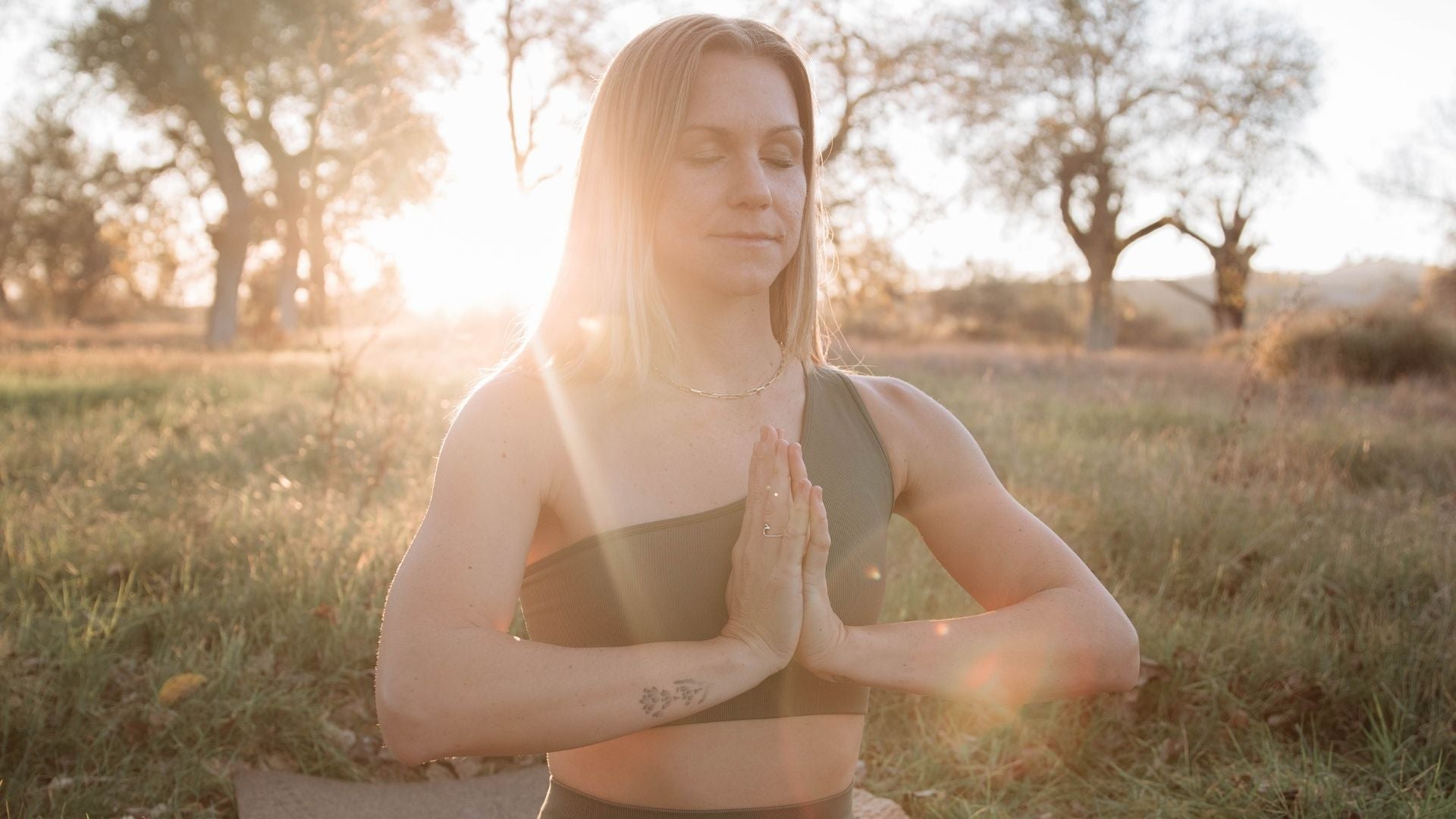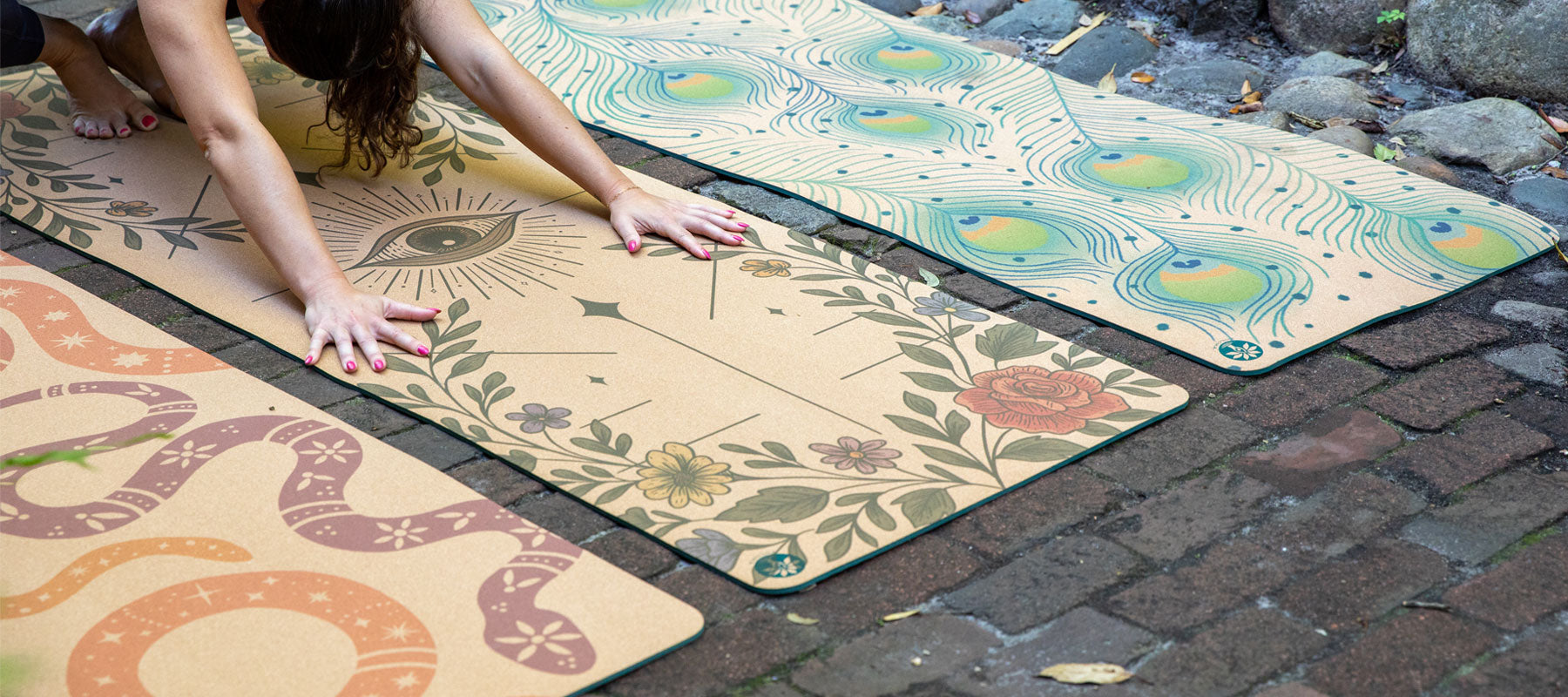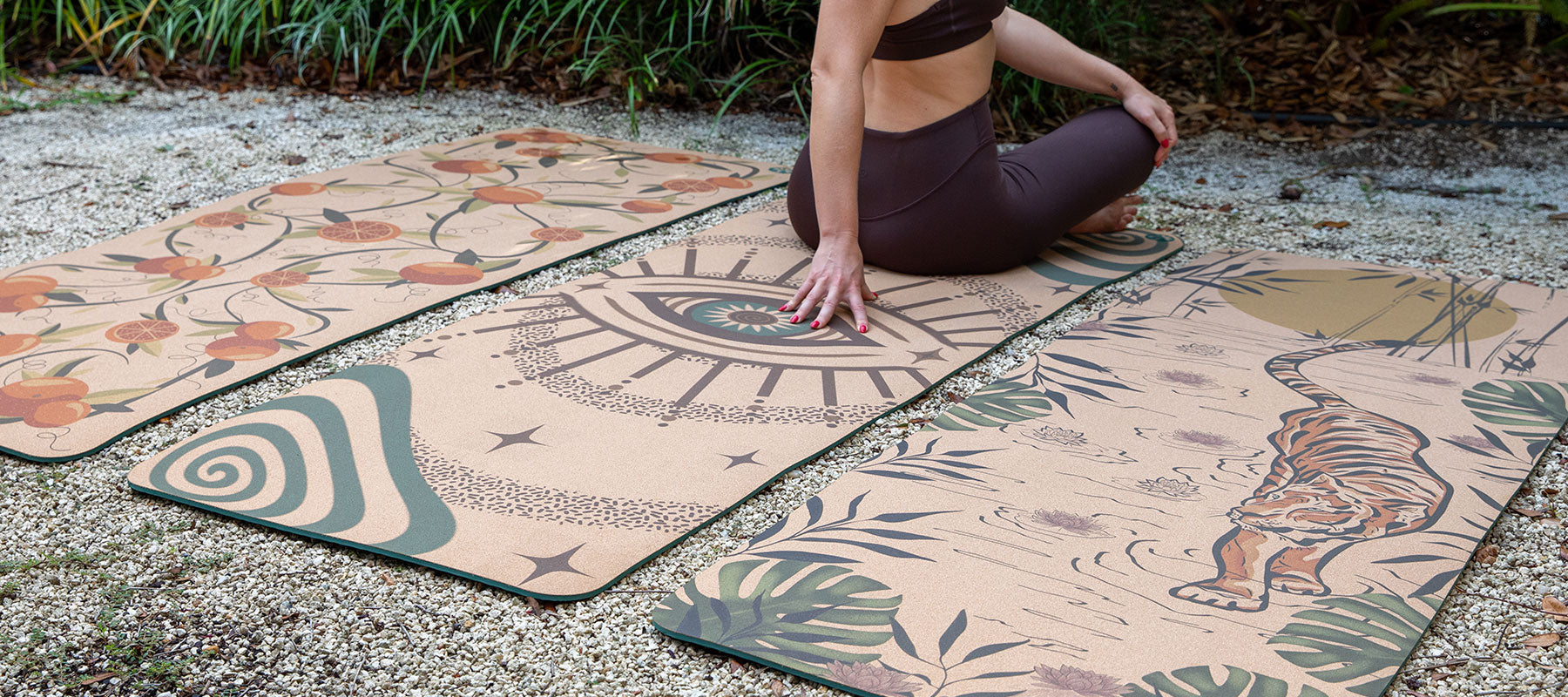7 Shades of Breathwork: A Practical Guide to Breathing Exercises
Breathing consciously is the very essence of practicing yoga. The rhythm of your breath is innately linked to your inner well-being. It creates the mind-body connection that calms the mind and helps you to understand the self. If you want to supercharge your yoga practice, breathwork—or pranayama—is an important tool.
There are several breathing techniques you can try. Some are more complex or demanding than others, but it’s all about finding what works for you and deepens your practice.
1. Abdominal Breathing
This is a simple exercise that aims to engage your diaphragm and deepen your breathing. Instead of taking shallow breaths into your chest, breathe deep down into your belly. Follow these steps to perform abdominal breathing.
- It’s best to do this lying down so your abdomen isn’t compressed. Find a comfortable spot to lie down with your arms at your side, palms up, and eyes closed.
- Put your left hand on your heart and your right hand on your stomach, taking note of which hand rises more when you inhale.
- Now, consciously raise your belly more as you inhale, redirecting shallow chest breathing deep into your diaphragm. This may feel uncomfortable if you’re stressed or anxious, as we tend to favor shallow breaths in these states. You will relax into it quickly.
- Relax the muscles in your face and carry on breathing in through your nose and out through your mouth. Each inhale and exhale should last three to five seconds. Keep breathing deeply and slowly.
- Carry on for at least ten minutes to reap the full benefits of this exercise. You may feel your heartbeat slow, and your muscles relax.
2. Pursed-Lip Exhalation
This exercise aims to change the natural shape of your lips while breathing to create slower, more conscious breaths. It’s the ideal pranayama to practice on our meditation cushion when you’re settling your mind.
- Find a quiet space. This breathing exercise can be done anywhere you feel comfortable, even at your desk. You can keep your eyes open or closed.
- Relax your neck and shoulders, letting go of any bodily tension you may be feeling.
- With your mouth closed, breathe in through the nose for a count of three seconds.
- Pursing your lips as if you’re playing an invisible trumpet, slowly breathe out for a count of four to five seconds.
- Maintain a slow, steady rhythm, keeping your exhales longer than your inhales.
- Keep doing this for as long as you like. Pursed-lip breathing can be performed as often as is necessary throughout the day.
3. Mantra Breathing
Our practical guide to breathwork can help you deepen your yoga practice or promote mental and physical wellbeing. Here are 7 pranayamas to try.
Once you have the hang of a breathing exercise that works for you, you can introduce a mantra to help hone your focus. A mantra is a phrase, word, or sentence that you repeat in your mind to help maintain a state of calm and clarity.
- First, choose your mantra. It is important that your mantra feels comfortable for you. It doesn’t need to be spiritual or mystical to be effective. It can be as simple as “in for three, out for five.” It can contain words of affirmation relevant to your situation, such as “calm, harmony, acceptance, control.”
- Choose your breathing style. Mantras can be paired with most breathing exercises.
- Find a comfortable position and begin your breathwork, staying consistent, and repeating your mantra silently in your head while you do so.
- You can use the same mantra every time or change it up, whatever feels right in the moment.
4. Visualization Breathwork
As the name suggests, this exercise involves using your mind’s eye to visualize something while you breathe. This can be a particular outcome or goal, an image that makes you feel calm, or a visual metaphor that helps you let go of heavy emotions.
For example, you may visualize holding a balloon in front of your chest, breathing out your tension into the balloon, and then letting it go. These visual metaphors can be powerful healing tools.
- Set an intention for your visualization breathwork. What is it you’re trying to achieve? Choose an image based on that goal. For example, if you’re trying to reduce stress, choose an image that makes you feel calm.
- Try to picture your chosen image in as much detail as you can. Don’t worry if it’s hazy or fleeting. Just do your best.
- Close your eyes and picture your image continuously while repeating a slow inhale/exhale pattern, breathing in through the nose and out through the mouth.
5. Inhale-Hold-Exhale
There are varying opinions on how long each stage of this exercise should be, but it’s important that you don’t strain yourself. If you feel uncomfortable or breathless at any point, adjust your rhythm.
- Start by trying the 4-7-8 pattern. This means you inhale through the nose for four seconds, hold it for seven, then exhale through the mouth for eight seconds. Let go of your breath slowly so you don’t run out early.
- It’s okay if you can’t manage to hold for seven or exhale for eight. Everyone’s body is different.
- Repeat this cycle nine times in a seated or lying position, counting the seconds in your head to maintain focus.
6. Mindfulness Breathing
Mindfulness is the intentional practice of observing internal and external sensations without judgment. It’s used to promote self-awareness, mental clarity, and emotional stability.
- Sit or lie down with your eyes closed and begin a comfortable breathing pattern. You can use abdominal breathing, the inhale-hold-exhale technique, or anything else that works for you. Don’t use any technique that involves too much concentration.
- Gently, let your mind begin to attend to the sensations within and around you. Your emotions, your muscular tensions, your body temperature. Attend to the noises and variations of light in your surroundings.
- Most importantly, you are there simply to observe. You don’t need to draw any conclusions or make any judgments about what you see and feel. Simply maintain a steady breathing rhythm and allow your mind to become aware of the sensations around you one at a time.
-
If you have intrusive thoughts or negative feelings, just allow them to pass and fade naturally. It is normal for the mind to wander during these exercises, as long as you can bring the focus back. However, ruminative thoughts, which often linger or spiral into repetitive worry, can sometimes be more deeply rooted in unresolved emotions or past experiences. However, this practice becomes more effective when paired with calming self-talk and the best anxiety affirmations for inner peace. Repeating gentle, reassuring phrases can help ground you and shift your attention away from anxiety. Many people find that having a list of supportive affirmations enhances their mindfulness routine.
7. Alternate Nostril Breathing
This is a great yoga breathing technique for relieving stress and anxiety. You alternate between blocking your right and left nostrils in a repeating pattern.
- Sit in an upright position with your eyes open or closed.
- Close your right nostril with your thumb or finger, breathing in through your left.
- Close your left nostril and breathe out through your right.
- Repeat this pattern, this time starting with your left nostril closed. Alternate between the two for at least ten breath cycles.
Mastering different types of breathwork opens the door for you to deepen your yoga practice. These techniques are also ideal for HITT or weight lifting workouts that require controlled breathing. Plus, you can use these techniques in your everyday life to connect to yourself and promote a sense of inner peace.


